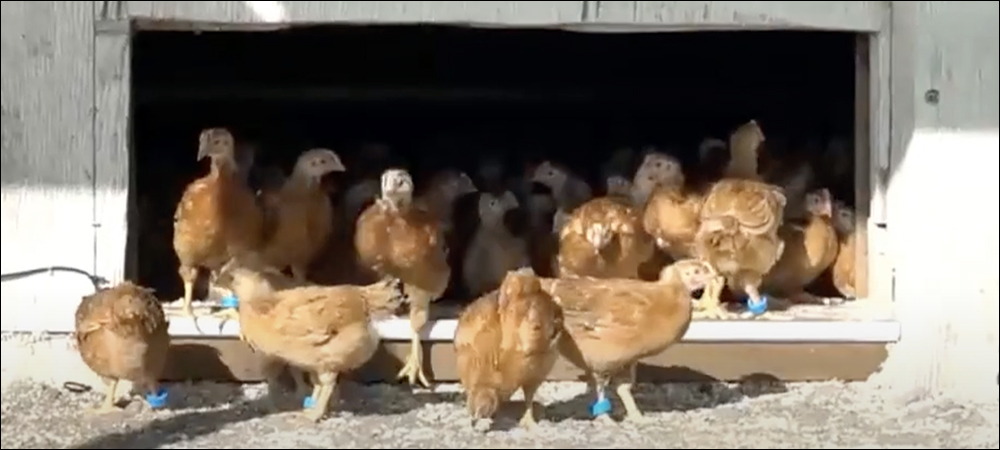Chicken producer Perdue Farms has been expanding the volume of free-range chickens it sells in an effort to provide a higher-quality product, as well as to boast a better lifestyle for the birds. That means more farms are providing organic or free-range pasture access by allowing chickens to come and go from chicken houses and peck through pastures in the open air. The company is now six months into a project using RFID technology to track the behaviors of freewheeling birds so farmers can more readily encourage outdoor grazing.
Perdue Farms, one of the largest producers of chickens for eating in the United States, generates 12 million broiler birds each week. It is now reportedly the largest supplier of free-range chickens. The U.S. Department of Agriculture (USDA) defines free-range birds as those that have access to the outside. In general, it is thought that these chickens offer higher amounts of protein, while their eggs might be more nutritionally dense. However, many of the animals may not be inclined to leave the confines of a chicken house without some incentive.
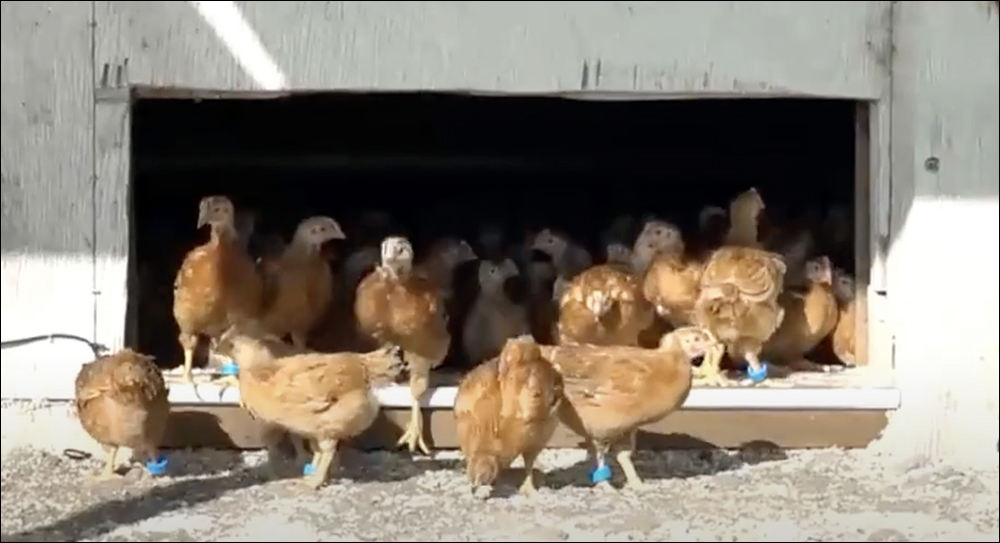
This year, Perdue Farms has been seeking ways in which it could track how many chickens designated as free-range wander out into pastures. This data is more relevant than ever for Perdue and its member farms, as many of its farmers are participating in a contest to be named the site where the most free-range chickens spend time in pastures rather than inside chicken houses.
The company claims 25 percent of its 12 million chickens produced each week are free-range, according to Bruce Stewart-Brown, Perdue’s senior VP of technical services and innovation. “This expansion of free-range products,” he says, “has meant, for farmers, a lot of transition of housing from traditional chicken houses with no access to the outside environment.” The question is what happens when pop-holes are cut into the house, with a fenced pasture to let the birds go outside.
Perdue has found discrepancies between farms. At one site, the chickens go outdoors in large numbers, while at another, not nearly as many go outside. For Stewart-Brown, the question is this: “Could anybody tell me, with a trustworthy number, who is getting the most chickens outside?” To study the most successful sites, he says, good numbers are required. Anecdotally, some breeds of birds may go out more than others. The age of the birds might also matter, as well as the weather and a host of other factors. “We can’t really move the subject forward without good numbers.”
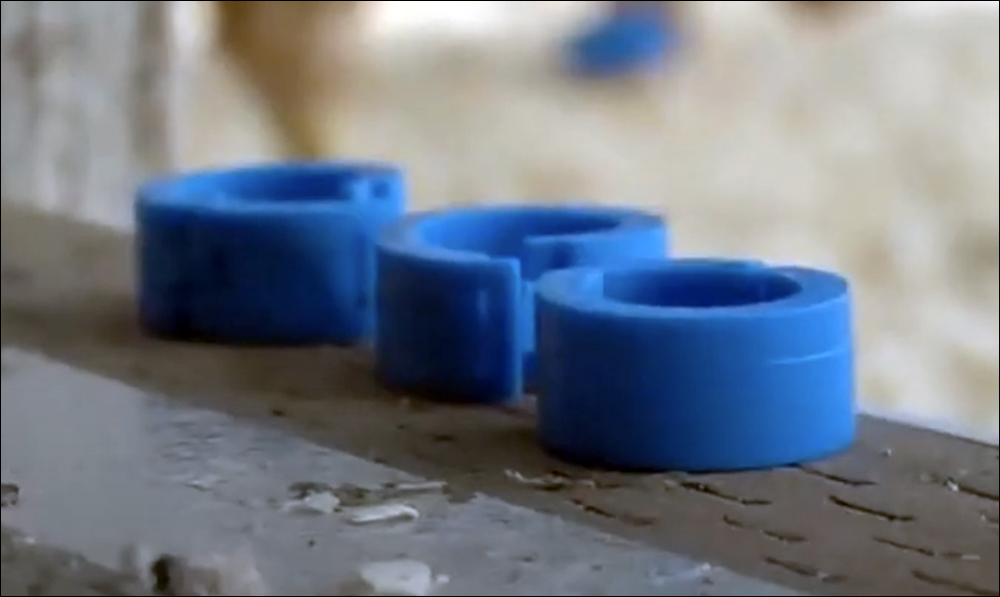
The company flew a drone over the chicken pasture at its test facility, but it found that the birds do not like drones. What’s more, the images captured require a worker to count the chickens. “I said ‘I’ll sign up for counting chickens on the farms where few chickens go outside,'” Stewart-Brown jokes. With artificial intelligence (AI), he notes, the counting of chickens could be automated eventually, though the next idea was to use radio frequency identification. RFID could track not only how many birds go outside, but also which ones. “I’d like to know the difference between birds,” he states, “and I’d like to know how long they stay outside.”
Six months ago, the company began building a UHF RFID system at its test facility in Salisbury, Md., to understand the movements of its free-range chickens into and out of chicken houses. It separated 1,000 of the 5,000 birds into a dedicated RFID-managed space and assigned each animal an RFID tag with a unique ID number. Each pop-hole measures 2 feet high by 4 feet wide. The firm worked with technology group Sentinel Robotic Solutions (SRS) and GAO RFID to develop the solution, which includes the drone and a robot designed to move through henhouses and stimulate activity.

Bruce Stewart-Brown
Perdue Farms is now working on its third iteration of the system, based on some early learnings. Engineering has been a challenge, Stewart-Brown reports. “There’s more engineering than we wanted,” he says. “It sounds easy. It’s not easy.” For one thing, he explains, chicken behavior is unpredictable. Birds wearing RFID tags often come close to the pop-hole, then step back, reverse course and walk through the hole in clusters.
Perdue Farms found that with antennas deployed too close to the ground, the RF energy was grounding out. Therefore, it reconfigured the antennas to be raised into the bottom lip of the pop-hole, with two antennas situated about 4 inches apart to identify direction. In addition, Stewart-Brown says, the range was dialed down to prevent stray reads from mingling birds. The positioning of the two antennas can cause RF interference as well, he adds.
The company’s engineers may opt to further separate the antennas to prevent interference between them, though Stewart-Brown says that design would require a balancing act. If it makes the space between the antennas too large, the pop-hole might require a tunnel design, which could impact chickens’ willingness to pass through them. All of the 1,000 chickens in the study are tagged with plastic RFID ring tags wrapped around a bird’s leg, directly above the foot. Of those 1,000, 17 managed to shake off the tag, but the others remained on the leg for the duration of the birds’ life, which is typically a few months.
The tags are attached a few weeks after each chicken’s birth and are removed at the time that the birds leave the test site for the chicken plant at the proper age. This process is performed by hand, which involves clipping the tag into place and then releasing the clip. Professional chicken handlers have little problem getting each tag in place and then removing it from the live bird, Stewart-Brown explains. “Birds can tell inexperienced from experienced handlers,” he says. “They settle right down” when a professional picks them up.
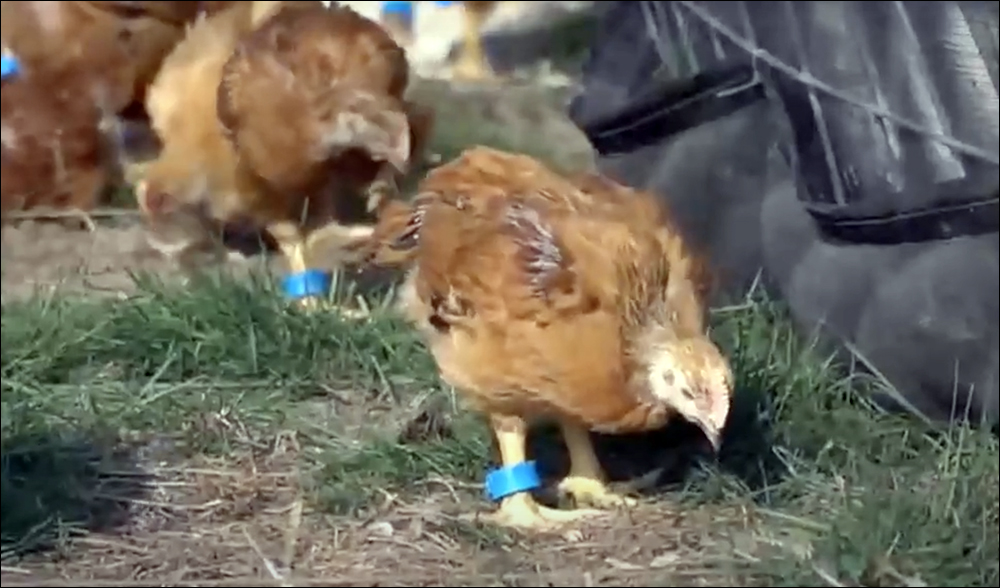
The system has been live at the test site for approximately six months. While the company works to determine the correct configuration of reader antennas and tag sizing, it is also considering software options. Perdue Farms currently collects data at the test facility, though in the long run it hopes to be able to access information remotely and thereby make it easier to temporarily deploy the technology at numerous farms. The firm may build around 10 systems that could be moved between sites. At present, there are approximately 800 free-range-style chicken houses among the farms, each containing about 20 pop-holes.
Since the solution was taken live at the Maryland test site, Stewart-Brown says, “It’s still too early to manage the data,” with the focus more on whether the technology can accurately capture data at all. Eventually, however, Perdue Farms expects to be able to conduct analytics about each bird and its behavior. Some chickens, the company presumes, may not choose to go outside at all, and with that knowledge, some farmers could attempt to address those birds that have a more sedentary lifestyle. Weather may affect chickens’ activity, but without such data, Perdue cannot make significant changes. “Lining the data up with weather will be interesting.”
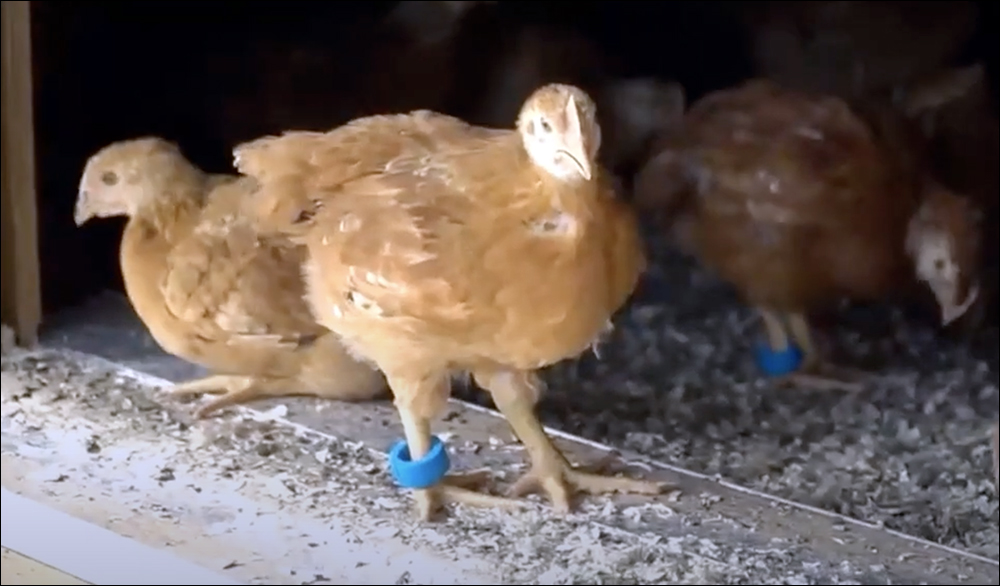
In addition, Stewart-Brown says, chickens tend to react to the presence of predators, such as birds of prey flying overhead. Perdue Farms expects the data will show all birds moving quickly inside at such times. The study will next focus on the kinds of pastures that attract chickens. For instance, the company hopes to study how the birds respond to pasture changes, such as seeding grass with oregano, alfalfa or dandelion. Ultimately, Perdue Farms believes there can be advantages in terms of meat quality and nutrition level if the chickens go outside more often and for longer durations. “We’re interested in providing the best chicken [consumers] can have.”
The company has launched a yearlong contest and it currently has 53 farmers signed up to compete for the title of the farm with the most outdoor-loving, free-range birds by August 2022. The goal of the contest is to gain more participation from farmers in efforts to encourage chicken ranging. “Farmers like to learn from other farmers,” Stewart-Brown states. “One of the things we hope this technology does for us is getting people interested in chicken behavior,” so that more farmers, as well as others in the poultry industry, will become enthusiastic about chicken care. “It makes for better chicken people.”

